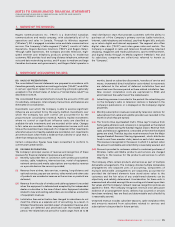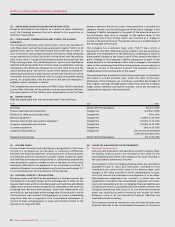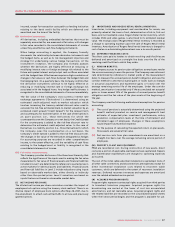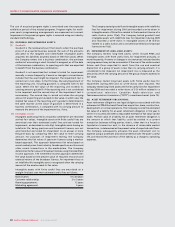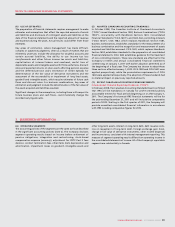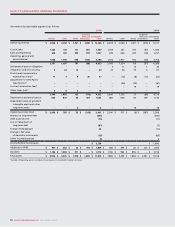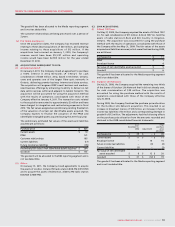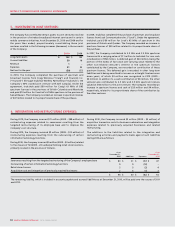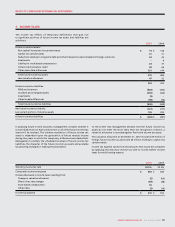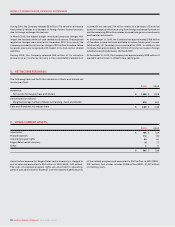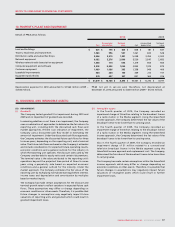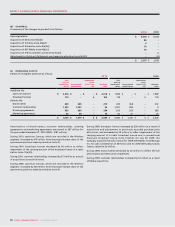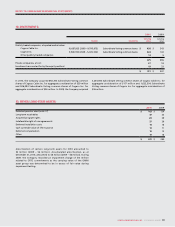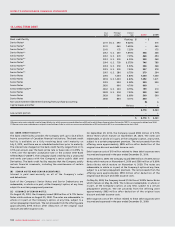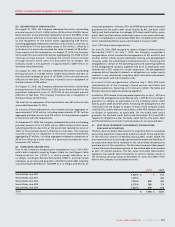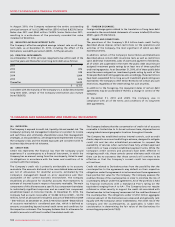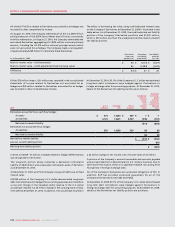Rogers 2010 Annual Report Download - page 91
Download and view the complete annual report
Please find page 91 of the 2010 Rogers annual report below. You can navigate through the pages in the report by either clicking on the pages listed below, or by using the keyword search tool below to find specific information within the annual report.
NOTES TO CONSOLIDATED FINANCIAL STATEMENTS
ROGERS COMMUNICATIONS INC. 2010 ANNUAL REPORT 95
The income tax effects of temporary differences that give rise
to significant portions of future income tax assets and liabilities are
as follows:
In assessing future income tax assets, management considers whether it
is more likely than not that some portion or all of the future income tax
assets will be realized. The ultimate realization of future income tax
assets is dependent upon the generation of future taxable income
during the years in which the temporary differences are deductible.
Management considers the scheduled reversals of future income tax
liabilities, the character of the future income tax assets and available
tax planning strategies in making this assessment.
To the extent that management believes that the future income tax
assets do not meet the more likely than not recognition criterion, a
valuation allowance is recorded against the future income tax assets.
The valuation allowance at December 31, 2010 includes $39 million of
foreign future income tax assets and $8 million relating to capital loss
carryforwards.
Income tax expense varies from the amounts that would be computed
by applying the statutory income tax rate to income before income
taxes for the following reasons:
7. INCOME TAXES:
2010 2009
Future income tax assets:
Non-capital income tax loss carryforwards $ 74 $ 148
Capital loss carryforwards 31 31
Deductions relating to long-term debt and other transactions denominated in foreign currencies 32 42
Investments –8
Liability for stock-based compensation 24 47
Ontario harmonization credit 58 64
Other deductible differences 151 144
Total future income tax assets 370 484
Less valuation allowance 47 52
323 432
Future income tax liabilities:
PP&E and inventory (428) (246)
Goodwill and intangible assets (359) (325)
Investments (5) –
Other taxable differences (48) (38)
Total future income tax liabilities (840) (609)
Net future income tax liability (517) (177)
Less current portion – future tax assets 159 220
Future income tax liabilities $ (676) $ (397)
2010 2009
Statutory income tax rate 30.5% 32.3%
Computed income tax expense $ 652 $ 640
Increase (decrease) in income taxes resulting from:
Change in valuation allowance (5) (64)
Effect of tax rate changes (69) (58)
Stock-based compensation 35 –
Other items (3) (16)
Income tax expense $ 610 $ 502


